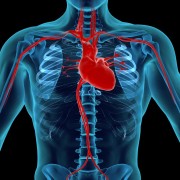Non-surgical methods to treat heart valve problems
Dr Paul Chiam discusses recent medical advancements in treating heart valve disease

For the last 40 years, the mainstay of treatment has been open-heart surgery, Dr Chiam says. Unfortunately for quite a significant portion of patients, open-heart surgery is quite risky for them, for example in elderly patients or patients with multiple diseases and that really drove the need for a less invasive way to treat heart valve disease.
In recent years, one therapy that’s really come to the fore is a transcatheter aortic valve replacement. The aortic valve is a valve that leads the blood out from the heart to the rest of the body. In many patients this valve tends to degenerate with time and when it becomes severely narrowed, patients develop symptoms, like shortness of breath, chest pains or even fainting spells.
We know that if you don’t replace this aortic valve, for these patients, their expected survival will be no more than 50 percent at two years.
In 2002, the first in-human transcatheter valve was performed whereby we could change this valve through access in the groin, and then deliver a new tissue valve to replace the aortic valve.
Since then the technology has progressed very rapidly and we now have two major players in the market – the Edwards SAPIEN valve and the CoreValve device. What we do with this technology is that we compress this device down and then put it into a big plastic catheter or tube that will lead from the groin back towards the diseased aortic valve and then we deploy the valve to replace the old one.
This is done without the need to cut open the chest, and it is done on a beating heart. It can even be done under local anesthesia for some patients that are able to obey commands during the surgery.
The other valve that we are concerned with mostly is the mitral valve. This valve allows the blood to come back from the lungs, into the left atrium and then go down to the left ventricle before it is pumped out through the aortic valve.
Two things can happen with the mitral valve, it can become severely narrowed, a condition we call mitral stenosis, which used to be very common in Singapore when we were a developing country, as it’s caused mainly by rheumatic fever.
When patients have this narrowed mitral valve, they become breathless and their effort tolerance becomes quiet limited. We can perform a simple ballooning of the valve, where we come from the groin, across the right side of the heart into the left and then we pass a balloon across to dilate this mitral valve. This has been shown to be very good therapy, with good outcomes and sustained results.
What we see more commonly nowadays in most of the developed world is a condition called mitral regurgitation, where this mitral valve becomes leaky. While previous treatment would be open chest surgery to either repair the valve or replace the valve completely, we now have a non-invasive method, where we pass a device from the groin and we come from the right side of the heart and we cross the left side, and what we do is apply a clip to the leaflets of the valve, to clip the valve together and this is simply called the MitraClip.
These are some of the non-surgical methods that have come up in the last 10 years or so that may give patients a wider range of therapeutic options.
Dr Paul T.L. Chiam is a consultant cardiologist with a subspecialty interest in interventional cardiology. He is in private practice at The Heart and Vascular Centre at Mount Elizabeth Medical Centre in Singapore and can be reached at +65 6735 3022.
Related Articles
Why laughter may not be the best medicine
Dr Julian K.B. Tan, an interventional cardiologist at Mount Elizabeth Hospital, explains the how strong emotions may affect the heart
Read moreWhat is a heart attack?
Dr Paul Chiam discusses the importance of seeking treatment quickly in the case of a heart attack
Read moreLatest Articles
Medical Care
Achieving Swift Recovery: Enhanced Recovery (ERAS) Direct Anterior Approach Total Hip Replacement
Consider total hip replacement with Alps Orthopaedic Centre's ERAS Direct Anterior Approach for faster recovery and reduced hospital stays. Learn about Dr. Jerry Chen's expertise in Singapore.
Read moreMedical Care
Enhanced Recovery (ERAS) Total Knee Replacement
Discover how Alps Orthopaedic Centre's Enhanced Recovery After Surgery (ERAS) approach transforms total knee replacement into a day surgery, offering faster recovery, less pain, and reduced hospital bills. Learn about Dr. Jerry Chen's expertise and schedule your appointment in Singapore.
Read moreMedical Care
Clinical Exercise Physiologist (CEP): The Emerging of Exercise is Medicine
How Exercising can be a Medicine
Read more